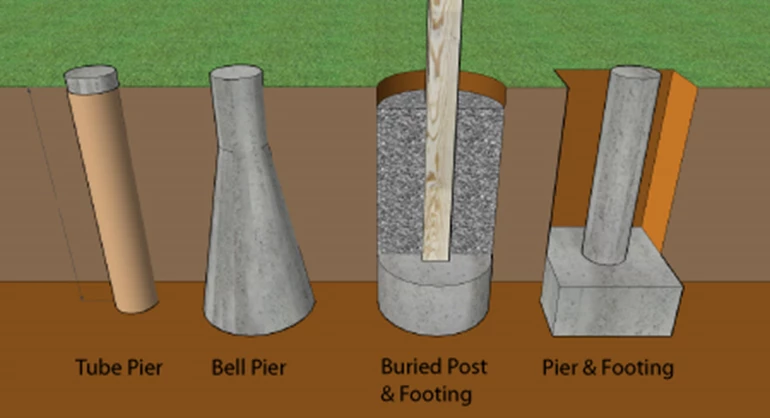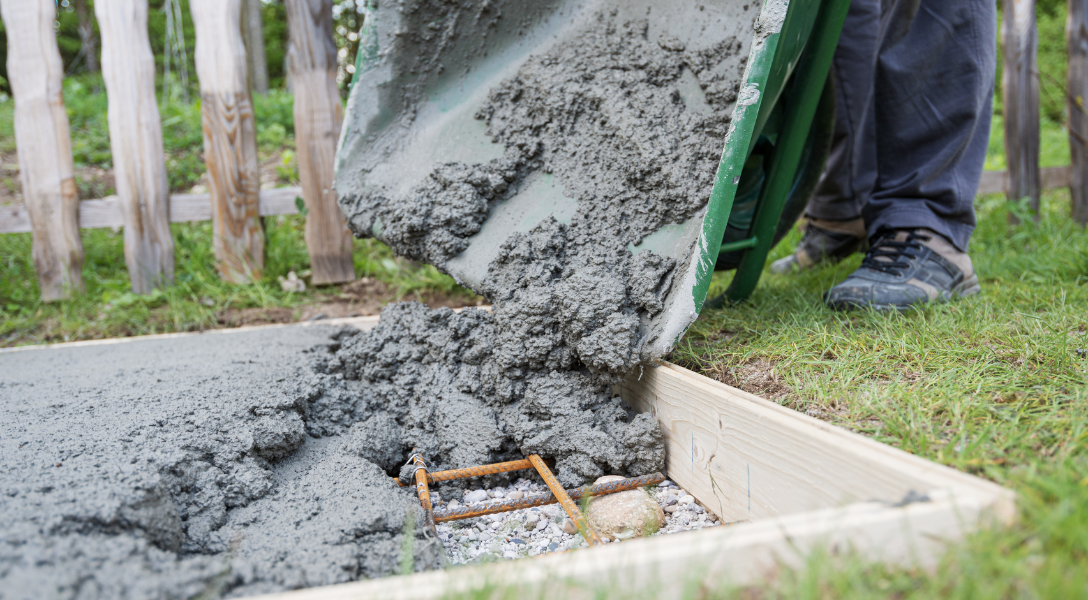Engineered for Success: The Science Behind Robust and Resilient Deck Footings
Wiki Article
Guarantee Security and Longevity With Properly Set Up Deck Footings
Deck grounds may not be one of the most attractive aspect of deck building and construction, yet they play an essential function in guaranteeing stability and long life. Appropriately mounted footings provide a strong foundation for your deck, preventing usual problems like sagging, changing, and even collapse. Nonetheless, picking the ideal sort of ground and correctly installing it can be a complicated procedure. In this discussion, we will discover the significance of correct deck footings, aspects to think about throughout setup, various types of footings available, detailed setup overview, and maintenance ideas for ensuring resilient grounds. So, if you wish to make certain the stability and longevity of your deck, keep reading to find the vital insights to attain a resilient and structurally audio outside space.Value of Proper Deck Grounds
Why are correctly mounted deck footings critical for the security and long life of your deck? The response exists in the fundamental function that deck grounds play in sustaining the weight of the whole structure. Deck footings are the foundation on which the deck rests, moving the lots from the deck to the ground. When footings are not correctly set up, it can bring about a series of issues that jeopardize the security and long life of the deck.First of all, correctly set up deck footings distribute the weight of the deck evenly, preventing any uneven settling or sinking. This is specifically vital in locations with unpredictable soil, as it assists to reduce the risk of the deck shifting or collapsing. In addition, well-installed grounds make sure that the deck stays degree, stopping any kind of architectural damage that can happen when a deck becomes uneven.
Secondly, correctly installed footings supply a strong support for the deck, protecting against too much movement and sway. This helps to maintain the structural honesty of the deck, minimizing the risk of crashes or injuries. It also decreases the deterioration on the deck, enabling it to withstand the components and regular usage for a longer time period.
Variables to Think About for Deck Ground Setup
When mounting deck footings, there are a number of vital variables to think about for correct setup. Different soil types have various load-bearing abilities, so it is crucial to conduct a dirt examination to make certain the grounds can support the weight of the deck and its residents. By taking into account these factors, you can ensure the correct installment of deck grounds and take pleasure in a resilient and steady deck.Kinds Of Deck Footings to Select From
There are a number of various kinds of deck footings readily available for you to choose from. Each kind has its own benefits and disadvantages, so it's essential to consider your specific needs and the conditions of your deck before choosing.One usual sort of deck footing is the concrete footing. This includes excavating holes in the ground and pouring concrete right into them to develop a solid foundation. Concrete footings are durable and provide exceptional security, making them ideal for decks in locations with tough dirt problems or high wind lots.
An additional option is the helical pier footing, which contains a steel shaft with helical plates that are screwed right into the ground. These grounds fast to set up and can be used in numerous dirt kinds, including sandy or clay soils. They are additionally adjustable, enabling very easy progressing of the deck.
Sonotube grounds are an additional popular option. These grounds are developed by positioning a cardboard tube in an opening and loading it with concrete. Sonotube grounds are reasonably very easy to mount and give ample security for smaller decks or in areas with much less requiring dirt conditions.

When selecting the kind of deck ground, it's crucial to think about aspects such as soil conditions, deck dimension and weight, regional building ordinance, and personal choices. By selecting the proper ground kind, you can ensure the stability and long life of your deck.
Step-by-Step Guide for Putting Up Deck Footings

Establish the place: Start by marking the specific setting of each footing using stakes and string (Deck Footings). Take into consideration any kind of regional building codes or policies pertaining to problem ranges
Dig the holes: Utilize a blog post hole miner or an auger to dig the openings for the footings. The deepness will certainly depend on the frost line in your location and the sort of soil. Usually, a depth of a minimum of 36 inches is suggested for stability.
Degree the openings: Ensure that the bottoms of the openings are degree (Deck Footings). This can be achieved by utilizing a degree or a straight board across the top of the holes
Include crushed rock: Place a layer of gravel at the bottom of each opening to boost water drainage and prevent the footing from penetrating the soil in time.
Place the footing types: Place the ground creates right into the openings, guaranteeing they are focused and level. Use stakes to secure them in location.
Mix and pour concrete: Comply with the guidelines on the concrete mix bag to prepare the concrete. Put the concrete right into the ground kinds, loading them completely.
Smooth the surface: Utilize a trowel navigate to this website to smooth the surface area of the concrete and eliminate any type of air pockets. Enable the concrete to treat according to the supplier's instructions.
Maintenance Tips for Lasting Deck Grounds
Proper upkeep is critical for making certain the long life and security of deck footings. her comment is here By frequently evaluating and preserving your deck footings, you can avoid damage and potential safety and security dangers.Routine cleaning is additionally crucial for preserving deck footings. Debris, plants, and dust can gather around the footings, which can cause moisture buildup and degeneration. Cleansing the footings consistently, using a stress or a brush washer, can assist protect against these issues and prolong the life-span of your deck.
In addition to cleaning, it is very important to keep the area around the footings free from any kind of obstructions. Avoid piling things against the footings or enabling plants advice to expand too near to them. These blockages can catch moisture and trigger the grounds to wear away over time.
Finally, normal resealing of the grounds is recommended to safeguard them from wetness and various other ecological elements. Using a water resistant sealer can help avoid water damages and expand the lifespan of the footings.
Final Thought
To conclude, correct installation of deck footings is crucial for making sure security and longevity of your deck. Elements such as soil type, tons capability, and neighborhood building regulations need to be thought about when selecting the appropriate sort of deck grounds. Following a step-by-step guide for setup and routine maintenance will certainly aid to ensure the footings stay long lasting and durable.In this discussion, we will explore the significance of appropriate deck footings, elements to consider during installment, various types of footings available, step-by-step installment overview, and maintenance ideas for guaranteeing long-lasting grounds. Deck grounds are the structure on which the deck rests, transferring the load from the deck to the ground.One common kind of deck footing is the concrete footing. Put the ground types: Insert the footing develops into the holes, guaranteeing they are centered and degree.In conclusion, correct setup of deck grounds is critical for guaranteeing security and durability of your deck.
Report this wiki page